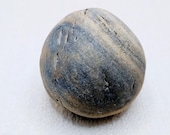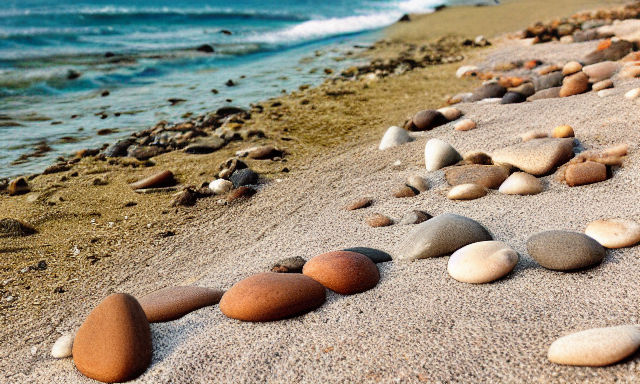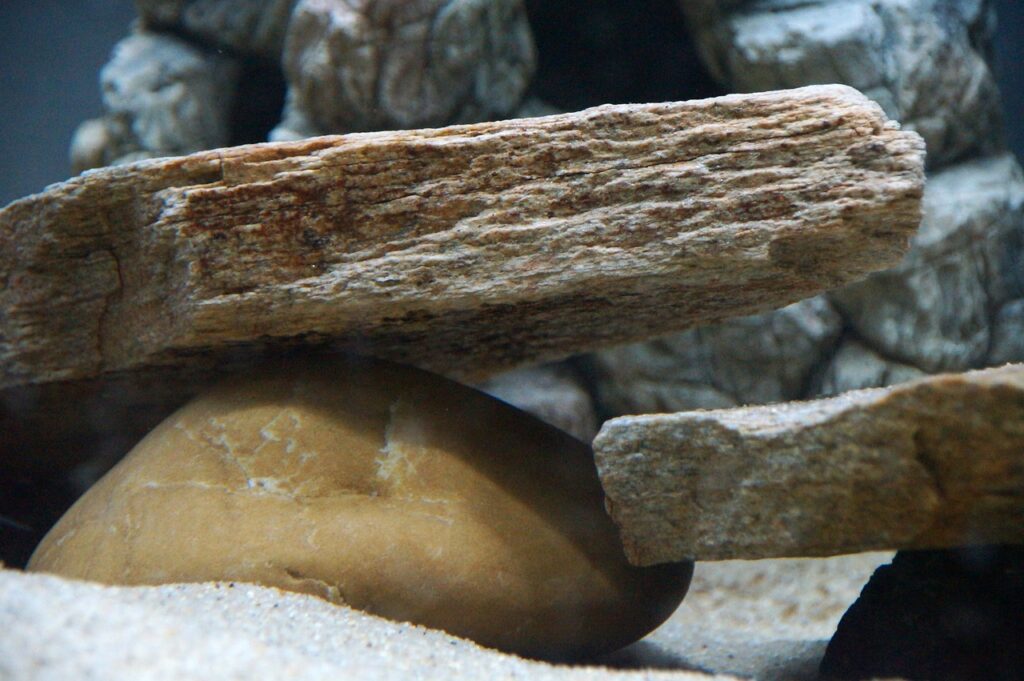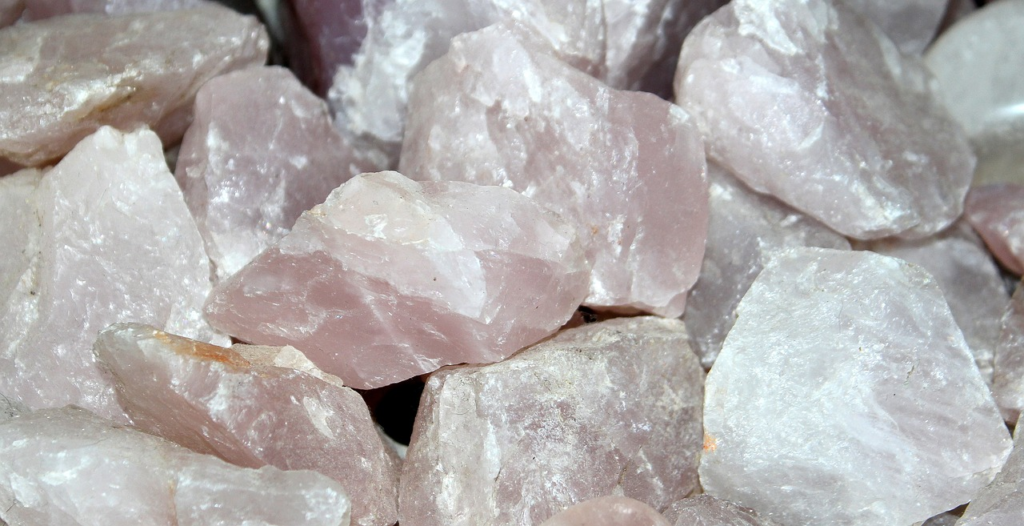The Beauty and Mystery of Slate Beach Stones in the Northeast
The rugged Northeastern coast of the United States is a treasure trove of natural wonders, and one of the hidden gems you can discover on its shores are the exquisite slate beach stones. These stones, often dark gray and possessing unique qualities, have been shaped and smoothed by the relentless caress of the ocean. In this comprehensive guide, we’ll explore the world of slate beach stones, from their geological origins to their cultural and practical significance.

Unveiling the Geological Origins
Formation of Slate
Slate beach stones have a remarkable geological backstory. Slate, in general, is a fine-grained, foliated, homogeneous metamorphic rock derived from an original shale-type sedimentary rock. The unique layering of slate, visible in many beach stones, is a result of the fine minerals that compose it, particularly clay and volcanic ash. These minerals undergo intense heat and pressure deep within the Earth’s crust, metamorphosing into slate. This geological transformation lends slate stones their distinctive flat and layered structure.
The Northeast’s Slate Deposits
One of the key reasons slate beach stones are abundant in the Northeast is the region’s rich geological history. The Northeastern United States is renowned for its extensive slate deposits. The Appalachian Mountains, which stretch from Alabama to Newfoundland, were once the epicenter of these vast shale deposits. Over millions of years, the region’s geological activity led to the metamorphism of shale into slate, giving rise to the abundance of slate beach stones we see today.
Coastal Beach Stones
Identifying Slate Beach Stones
Slate beach stones exhibit several characteristics that distinguish them from other beach stones.
Appearance
The most recognizable trait of slate beach stones is their distinct coloration. They’re predominantly dark gray, often with subtle variations in hue. This dark color is the result of the rich mineral content, particularly the carbonaceous materials present in the parent shale rocks. However, don’t be surprised if you come across slate stones in shades of blue, green, or even purple. These colors often result from mineral impurities, which infuse the stone with a beautiful and unique aesthetic.
Texture
Slate beach stones have a smooth and sometimes slightly slippery texture. Their surface can be polished and finely grained due to the metamorphic process they’ve undergone. This fine-grained texture often makes them feel cool to the touch, a quality much appreciated by beachgoers and collectors.
Layered Structure
One of the key identifiers of slate beach stones is their layering. These stones often split into thin sheets or layers. This distinctive feature is a direct result of the slate’s geological formation, where intense pressure forces minerals to align parallel to each other.
Unpredictable Shapes
Slate beach stones come in various shapes, from perfectly flat to more irregular forms. Unlike some beach stones that are naturally rounded by the sea, slate stones are less uniform. This variability adds to their charm, as no two slate stones are quite the same.
Balancing Rocks – Cairns
Cultural Significance
Native American Tribes
For many Native American tribes that once inhabited the Northeastern region, slate was a significant material. It was commonly used to craft tools, including knives, arrowheads, and even jewelry. The unique properties of slate made it a valuable resource for their daily needs.
Slate in Art and Craft
Slate beach stones, with their fascinating textures and subtle colors, have gained popularity among artisans and crafters. They’re often used to create jewelry, home decor items, and small sculptures. The stone’s surface can be carved, painted, or engraved, allowing for intricate designs that enhance the natural beauty of the slate.
Practical Uses
Slate beach stones, due to their fine-grained structure, have also found practical applications. The most common use is for roofing tiles. The same characteristics that make slate stones appealing for art and craft purposes—its durability, flatness, and resistance to splitting—make it ideal for protecting homes from the elements.
The Allure of Slate Beach Stones
Slate beach stones hold a special place along the Northeastern coast, their story intricately woven into the region’s geological history. As you walk along the shoreline, with the sound of the waves in the background, take a moment to pick up a slate beach stone. Run your fingers along its smooth surface, feel its coolness, and appreciate the beauty that nature, with time and artistry, has created.
FAQs
Is Slate A Natural Stone?
Yes, slate is a natural stone. It’s a metamorphic rock formed from shale or clay.
Difference Between Slate And Stone
Slate is a type of stone. The primary difference is that slate is a fine-grained, foliated metamorphic rock, while “stone” is a broader term that can refer to various rock types.
Slate Stone Uses
Slate stone has versatile uses, including roofing, flooring, landscaping, and interior design.
Can Slate Stone Be Painted?
Slate stone can be painted, but it’s crucial to use the appropriate paint and sealant designed for stone surfaces.
How To Lay Slate Stones
Laying slate stones typically involves preparing a stable base, arranging the stones, and filling gaps with mortar or sand.
How To Clean Slate Stones
Cleaning slate stones involves removing dirt and stains using a mild stone-specific cleaner and resealing them if necessary.
Is Slate Good For Shower Walls?
Slate can be used for shower walls. Its natural beauty and waterproof qualities make it a suitable choice.
Can Slate Beach Stones Be Used for Northeastern Landscaping?
Slate beach stones are an excellent choice for landscaping in the Northeast. They offer durability and a natural appearance that complements the region’s aesthetics.
Are Slate Beach Stones Suitable for Walkways in the Northeast?
Slate beach stones are ideal for creating walkways in the Northeast. Their flat surfaces and unique textures provide a charming and functional pathway.
Can I Use Slate Beach Stones for a Patio in the Northeast?
Yes, slate beach stones can be used for patios in the Northeast. They withstand weather conditions and add a rustic touch to outdoor living spaces.
How Can Slate Beach Stones Enhance Drainage in the Northeast?
Slate beach stones are porous, aiding in natural drainage. They can prevent water pooling in landscaping areas, which is beneficial for Northeastern regions with varying weather patterns.
What Are the Benefits of Using Slate Beach Stones in Northeastern Landscaping?
Slate beach stones in Northeastern landscaping offer low maintenance, resistance to cold temperatures, and an authentic look that harmonizes with the region’s natural beauty.
How to Lay Slate Beach Stones in Northeastern Landscaping?
Laying slate beach stones in Northeastern landscaping involves preparing a stable base, arranging the stones to achieve an attractive pattern, and filling gaps with sand or gravel for stability.
How Do I Clean and Maintain Slate Beach Stones in the Northeast?
Cleaning and maintaining slate beach stones in the Northeast is simple. Regularly remove debris and use a stone-specific cleaner to keep them looking their best.
What’s the Difference Between Slate Beach Stones and Other Stone Types in the Northeast?
Slate beach stones are metamorphic rocks, known for their flat, layered appearance. The main difference from other stone types in the Northeast lies in their unique texture and origin.
What Are Common Uses for Slate Beach Stones in the Northeast?
Slate beach stones in the Northeast have various uses, including creating charming walkways, rustic patios, and eye-catching landscaping features.













